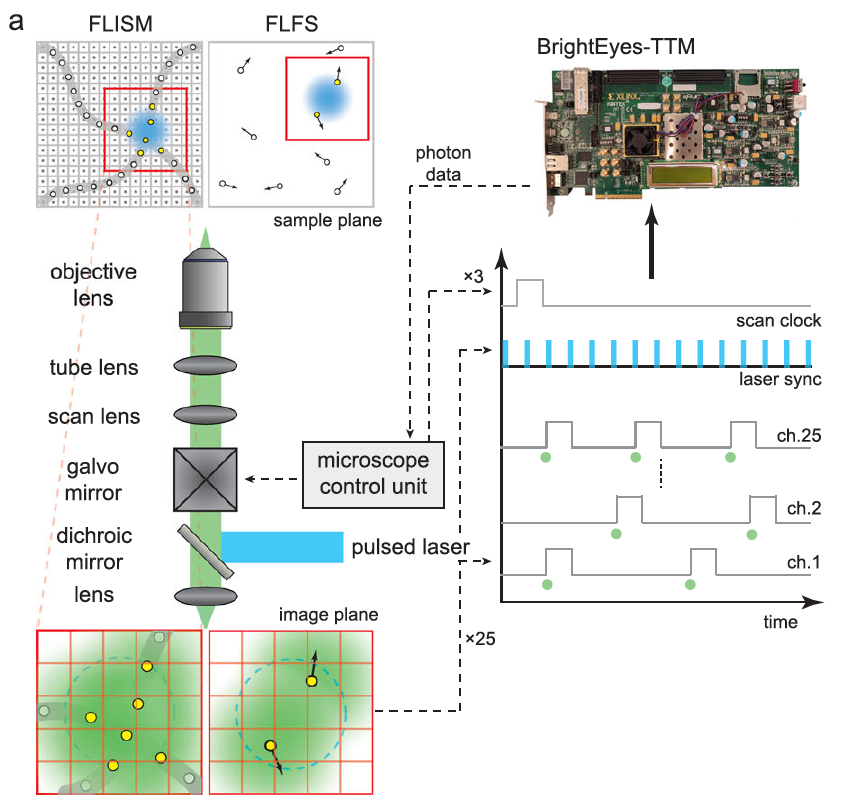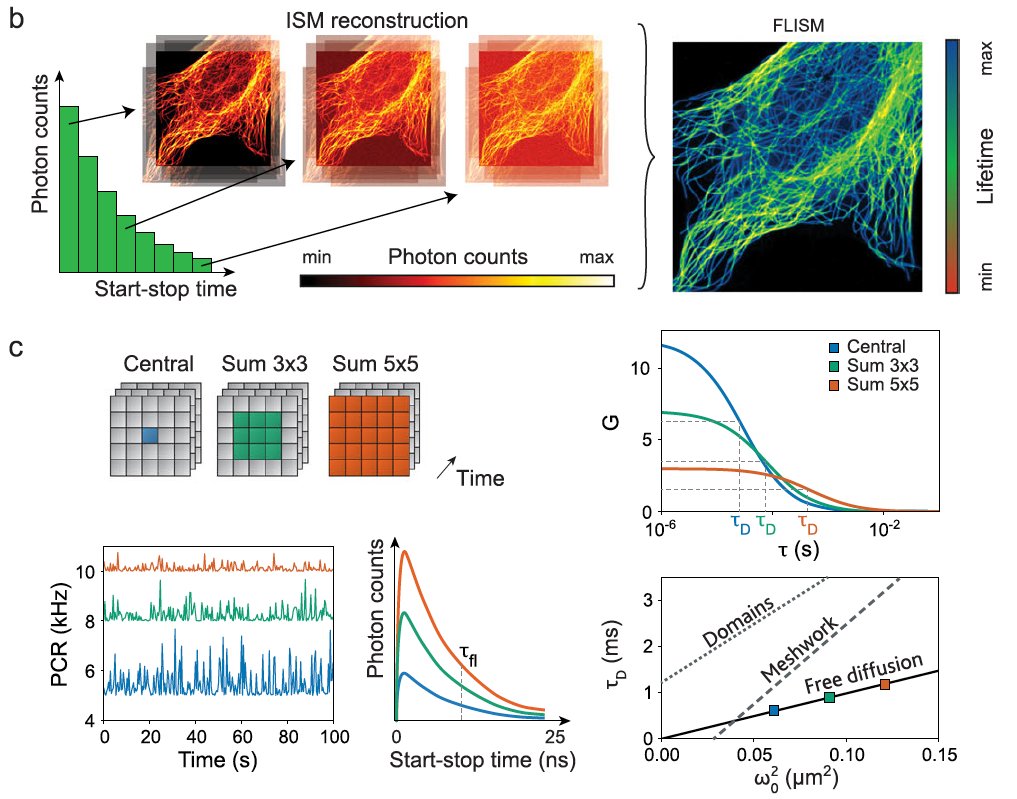Discover and read the best of Twitter Threads about #SingleMolecule
Most recents (3)
#quantum is here! Why not collect #fluorescence #photon-by-photon in your laser-scanning #microscope? We developed the #BrightEyes_TTM, an #opensource data acquisition system able to do it!
nature.com/articles/s4146…
@IITalk @ERC_Research @RNA_iit @MSCActions #BrightEyes_ERC
(1/5)
nature.com/articles/s4146…
@IITalk @ERC_Research @RNA_iit @MSCActions #BrightEyes_ERC
(1/5)

Our time-tagging #DAQ module can collect single-photon signals from 25 independent channels and reference signals from 3 channels. We showed how this module combined with a #SPAD array allows us to perform #FLISM and #FLFS. (2/5)
#imagescanningmicroscopy #fluorescence #lifetime
#imagescanningmicroscopy #fluorescence #lifetime

We characterized the #BrightEyes_TTM. We can reach a single-shot precision of 30 ps, 4 ns dead-time, and an "infinite" range in all channels, with a total flux of up to 125 MHz. (3/5)
#TCSPC #antibunching #quantum #microscopy #FPGA
#coding #LIDAR
#TCSPC #antibunching #quantum #microscopy #FPGA
#coding #LIDAR

🚨 Interested in single-molecule imaging approaches and/or pore forming proteins? Check out this awesome work from Conall, James and Till at UNSW. Buckle up... 🧵
#UNSW @SingMolSci @Mol_Machines #SingleMolecule #imaging @PratoPores @_DrCJM_ @m_dunstone
doi.org/10.1101/2021.1…
#UNSW @SingMolSci @Mol_Machines #SingleMolecule #imaging @PratoPores @_DrCJM_ @m_dunstone
doi.org/10.1101/2021.1…
Hold up... if you haven't already done so - follow @Mol_Machines to keep up to date with their awesome single-molecule studies :)
tinyurl.com/yw6sk5uz
1/9 Could graphene coverslips improve your single-molecule fluorescence and superresolution experiments? In our article in @AdvancedAms we combine #DNAorigami with #graphene to perform #singlemolecule #biophysics, #biosensing & #superresolution microscopy.
1/9 Could graphene coverslips improve your single-molecule fluorescence and superresolution experiments? In our article in @AdvancedAms we combine #DNAorigami with #graphene to perform #singlemolecule #biophysics, #biosensing & #superresolution microscopy.


